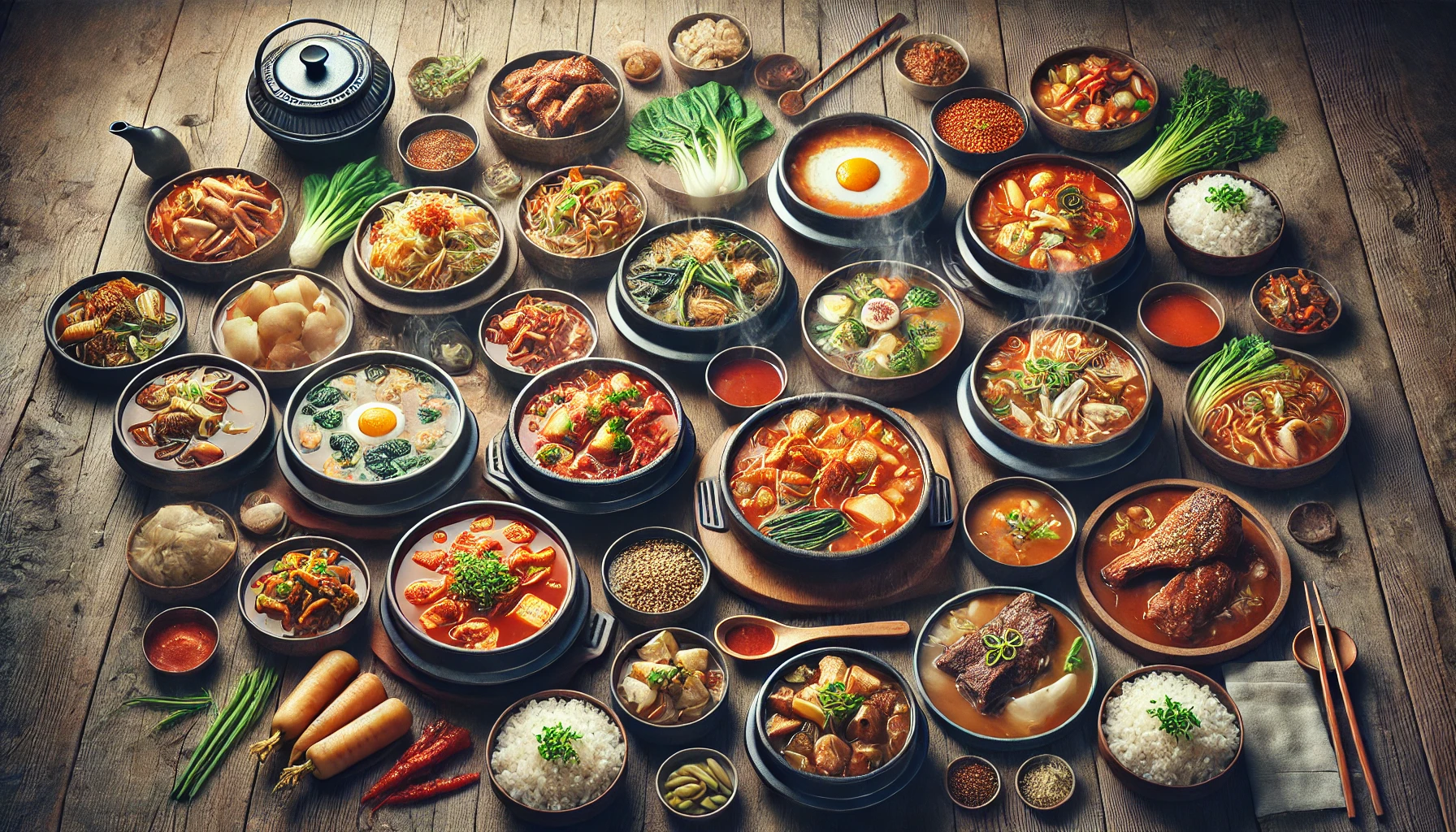Introduction
As the leaves turn fiery red and golden yellow in Korea, the chill in the air signals the arrival of autumn. During this season, Koreans seek comfort in warm, nourishing dishes, especially Korean autumn soups, which are deeply rooted in cultural traditions and seasonal ingredients. A Korean autumn soup is not just about sustenance; it embodies stories of family gatherings, rich history, and the philosophy of eating with the seasons. This article will explore some of the most famous Korean autumn soups, with a spotlight on Baechu-guk, a cabbage soup that has been cherished for generations. Prepare to dive into the world of Korean autumn soups and Korean cuisine, where every bowl tells a story, and every sip warms the soul.
The Magic of Korean Autumn Soups
- Seasonal Ingredients that Define Autumn
Korean cuisine celebrates seasonal ingredients, with each season introducing unique flavors to the table. In autumn, vegetables like cabbage, radish, and pumpkin fill various soups that warm both body and soul. - The Eum-yang Ohaeng Philosophy
Koreans embrace eum-yang ohaeng (음양오행), the balance of yin and yang and the five elements, to guide their diet choices. Korean chefs craft autumn soups not just to delight the palate but also to harmonize with the body’s needs as temperatures drop.
A Brief History of Korean Soup Culture
- Soup Through the Ages
Koreans have cherished soup, or guk (국), as a staple in their meals for centuries, with it often taking center stage in traditional feasts and everyday meals. - Regional and Family Specialties
Over time, regional specialties and family recipes emerged, creating a diverse landscape of soups that vary by region, season, and even household. - The Role of Autumn Ingredients
As autumn brings cooler temperatures, hearty soups become even more appealing. Koreans understand the importance of seasonal eating and tailor autumn soups to feature ingredients that are fresh and abundant.
Baechu-guk: The Beloved Autumn Cabbage Soup
- Why Baechu-guk Holds a Special Place
One of Korea’s most iconic autumn soups is Baechu-guk (배추국), a simple yet flavorful cabbage soup that holds a special place in Korean hearts. - Symbolism of Cabbage in Korean Cuisine
Baechu-guk represents Korean simplicity and respect for seasonal ingredients. Traditionally, families prepare this soup to mark the beginning of cabbage season and as a prelude to kimjang (김장).
Ingredients and Preparation of Baechu-guk
To prepare Baechu-guk, Koreans rely on a few simple ingredients: fresh napa cabbage, soy sauce, garlic, and occasionally small amounts of beef or dried anchovies for added depth in the broth. The simplicity of this soup allows the natural sweetness of the cabbage to shine.
Recipe for Baechu-guk: A Taste of Autumn in Every Spoonful
- Ingredients Needed
List of ingredients such as napa cabbage, water, soy sauce, etc. - Step-by-Step Instructions
Detailed steps on preparing the broth, adding cabbage, seasoning, and serving suggestions.
The Cultural Significance of Baechu-guk in Korean Households
- A Tradition Passed Down Through Generations
Baechu-guk is often the first soup made with fresh autumn cabbage, signifying the start of a season filled with preparations for winter. - A Symbol of Family and Heritage
In Korean culture, food is not only a means of survival but also a way to preserve family bonds and traditions. When a bowl of Baechu-guk is placed on the table, it reflects not only the cook’s skill but also their care for family members.
Other Popular Autumn Soups in Korea
- Dwaeji-kimchi Jjigae (Pork and Kimchi Stew)
This hearty stew mixes aged kimchi with tender meat. It’s filling, comforting, and often enjoyed with rice. - Gomguk (Beef Bone Soup)
Gomguk is a nutrient-packed soup made by simmering beef bones for hours. It’s popular in autumn and provides a warming, nourishing meal. - Hobak-juk (Pumpkin Porridge)
Hobak-juk is technically a porridge but often eaten like soup. Made with sweet pumpkin and glutinous rice, it’s perfect for chilly days.
The Philosophy of Eating with the Seasons in Korea (Korean autumn soups)
Korean cuisine emphasizes eating seasonally, rooted in traditional medicine and harmony with nature. Autumn soups like Baechu-guk, Gomguk, and Hobak-juk nourish the body, preparing it for winter. Koreans believe these seasonal dishes align with life’s natural rhythms.
Conclusion: Embracing the Warmth of Korean Autumn Soups
As temperatures drop, Korean soups bring warmth. Autumn soups in Korea, especially Baechu-guk, embody culture, tradition, and seasonal wisdom. By enjoying these soups, you’re tasting food and experiencing Korean heritage.
Next time you cook, try Baechu-guk. Let napa cabbage, umami broth, and Korean warmth fill your home with autumn’s spirit. Whether shared or enjoyed alone, Baechu-guk brings comfort through seasonal eating.

